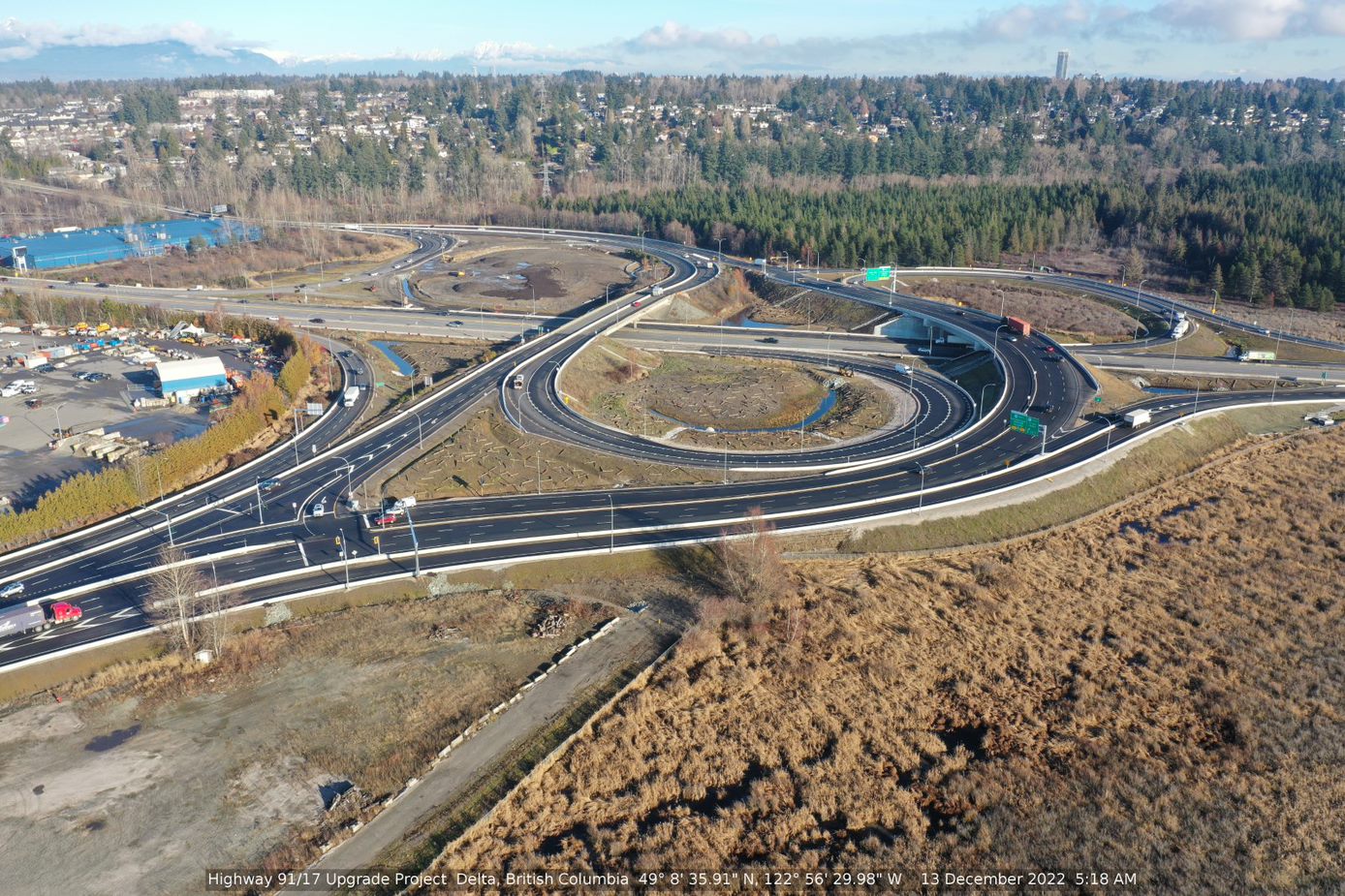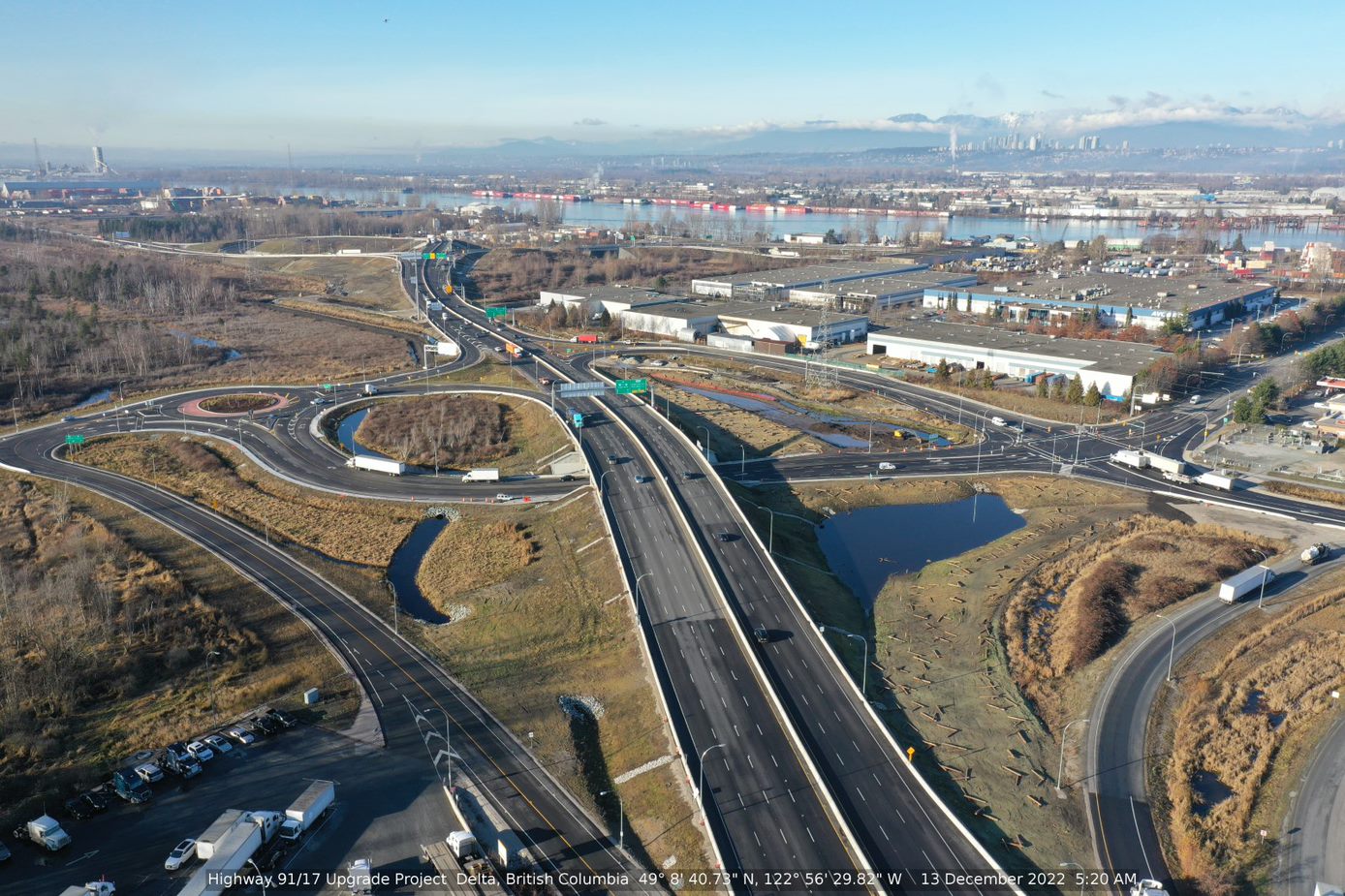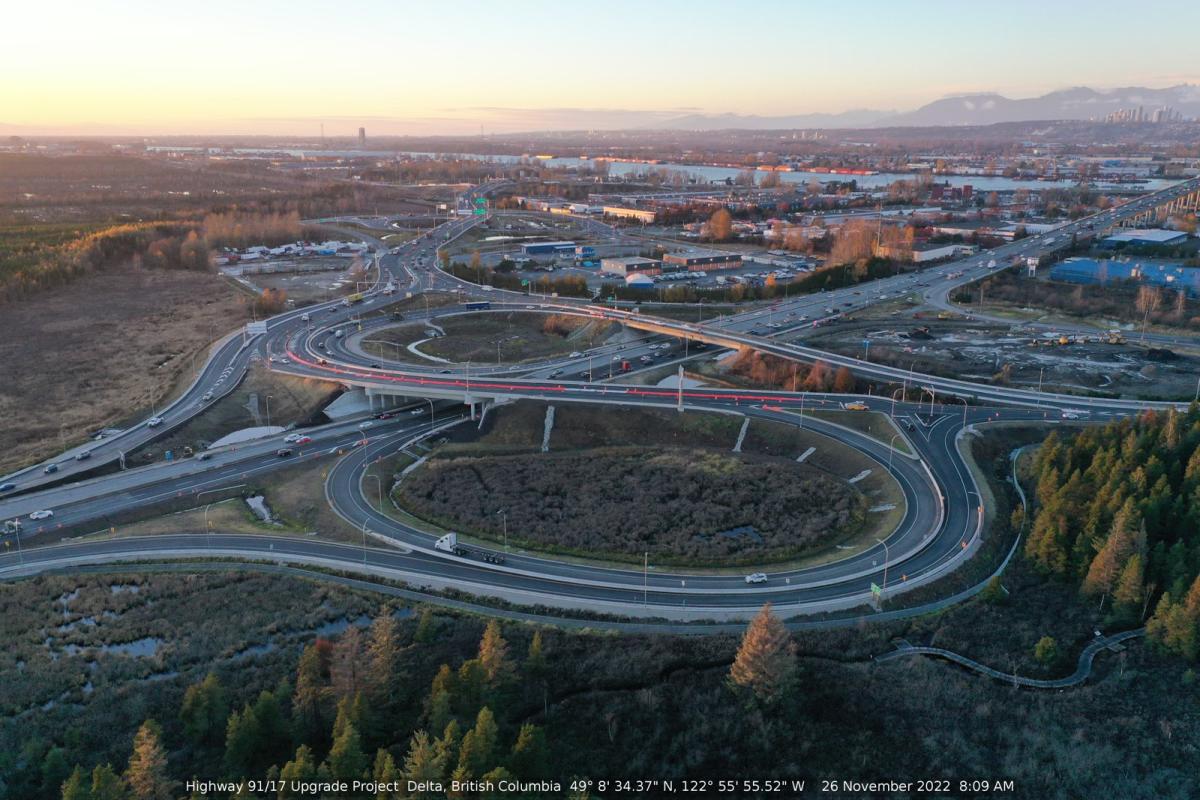
Located 25km from Vancouver, BC, the City of Delta is a relatively isolated community neighbouring Surrey and Richmond. Following the completion of several major infrastructure upgrades, the Highway 17/Highway 91C intersection became the most congested intersection along the Highway 17 corridor. This intersection is vital for maintaining the movement of goods and people across the region, while reducing truck traffic on municipal corridors in Surrey and Delta.
Geographical challenges/constraints of the project site included flat (0.5%) terrain gradient, environmentally/archeologically sensitive areas, and subsurface contamination. Despite these challenges, Pacific Gateway Constructors (PGC) and McElhanney, the prime consultant/design lead, proposed a design that prioritized safety and comfort for all road users while achieving the project’s objectives of developing a sustainable design that preserved important bog and wetland functions, protected habitat, and promoted stormwater treatment, improving travel time, safety, and economic growth.

McElhanney rose to the province’s challenge for innovation through the design-build process by developing a pragmatic one-way-couplet roadway-system configuration, while retaining the existing bridge and two-lane loop ramp for the Highway 91/91C Interchange, providing for environmentally sustainable design. In addition to meeting the project objectives, McElhanney’s innovative design provided efficient traffic flow, improved service merge sequences, featured sustainable design by reusing existing infrastructure, and utilized complex construction staging given the spatial constraints.
The Highway 91/17 Upgrade project is adjacent to Burns Bog, a complex ecosystem requiring special management and attention to protect its environmental and cultural resource values. Because of this proximity, McElhanney developed and revised the Construction Environmental Management Plan (CEMP). All associated work plans secured regulatory work permits from federal and provincial regulators and obtained protective fish and wildlife salvage permits for red and blue-listed species such as the pacific water shrew and red-legged frogs.
Additionally, the project team dealt with known contaminated soils, conducted fish and wildlife salvages, vegetation and wildlife surveys, and identified habitat offsets within the project footprint to mitigate environmental impacts.
 Due to the site’s proximity to Burns Bog, increased runoff caused by climate change was an important consideration for this project. McElhanney prepared a Climate Change Adaptation Report to gather input from the drainage, geotechnical, structural, and traffic disciplines on considerations and potential impacts of climate change.
Due to the site’s proximity to Burns Bog, increased runoff caused by climate change was an important consideration for this project. McElhanney prepared a Climate Change Adaptation Report to gather input from the drainage, geotechnical, structural, and traffic disciplines on considerations and potential impacts of climate change.
Burns Bog will receive increased precipitation as climate change progresses, increasing the run-off and water stored in the bog. McElhanney’s proposed design mitigates the effect of this added run-off through adjustable weirs located at the 96 Street ditch and the Highway 91 west ditch. These weirs were designed to be adjusted to suit the seasonal variation of the water table in the bog to prevent it from draining into the site.
The project team hosted an open house in the area to create awareness and education around the project scope and timeline, and to provide information on direct employment opportunities to local residents and businesses alike. The team ensured that all interested parties could bid on work packages as they were made available and gave preference to local businesses when appropriate.
The project team opened employment and contracting opportunities to support workforce development with a focus on Indigenous peoples through a Community Benefits Program. This program engaged the local community via open houses, community events and offered in-field training opportunities. This process was summarized into a document called the Community Benefits Plan, which outlined the team’s local engagement, recruiting, employment, training, and subcontracting strategies to maximize opportunities for Indigenous Peoples, equity groups, and local residents. The plan’s content was reviewed annually throughout the duration of the project and was amended as necessary to ensure its effectiveness.